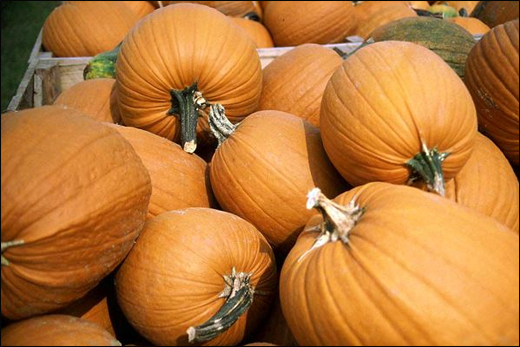Vegetable Marrow/ Field Pumpkin/ Cucurbita pepo Linn./ Cucurbita mammeata Molina
Abstract
Cucurbita pepo, commonly known as a pumpkin, is a widely cultivated plant recognised for its nutritional and medicinal values. In Ayurveda, it is appreciated for its cooling, nourishing, and rejuvenating qualities. The seeds, fruit pulp and even flowers are used in various therapeutic applications. It is rich in antioxidants and vital nutrients. Cucurbita pepo offers a wide range of health benefits, including anti-inflammatory, anthelmintic and diuretic properties. It is also beneficial in managing urinary disorders, skin problems and parasitic infections. This article presents a detailed overview of its taxonomy, Ayurvedic uses and modern therapeutic potential.

Introduction
Cucurbita pepo is a versatile plant species of the Cucurbitaceae family, used extensively in culinary and traditional medicine. In Ayurveda, its usage extends beyond the kitchen to healing practices involving seeds and fruit pulp. It holds significant importance due to its action on the digestive and urinary systems. With its easily digestible nature and rich nutrient profile, it supports detoxification and nourishment. The plant is also a valuable home remedy for intestinal worms and prostate health. Modern research continues to validate its traditional uses through phytochemical and pharmacological studies.
Scientific Classification
- Kingdom : Plantae
- Order : Cucurbitales
- Family : Cucurbitaceae
- Genus : Cucurbita
- Species : Cucurbita pepo
Synonym
Cucurbita mammeata Molina
Ayurvedic Synonyms
- Kushmandi
- Karkaaru
- Raja Karkati
- Kushmaand
- Kumhadi
Vernacular Names
- Sanskrit : Kooshmandi
- Hindi : Kumhara, Safed Kaddu, Kumda
- Bengali : Saada Kumhara, Lanka
- Gujarati : Kolu
- Marathi : Kaula, Kohala
- Tamil : Parangi
- Malayalam : Mattana
- Telugu : Gummadi Kaya
- Kannada : Sihi Kumbala Kayi
- Manipuri : Mairen
- Oriya (Odia) : Kakharu
- Assamese : Rangalao
- Spanish : Calabaza, Zapallo
- French : Cocozelle, Courge, Courgette, Pepon
- Chinese : Meiguo Nan Gua, Zhong Guo
- Portuguese : Abóbora
Habitat
Cucurbita pepois native to North America and is now widely cultivated across temperate and tropical regions of the world. It thrives in warm climates and is commonly grown in kitchen gardens, farms and agricultural fields due to its adaptability and nutritional value.
Morphology
Cucurbita pepo is an annual, fast-growing climbing or trailing plant with five-angled, rough (scabrous) stems that can extend up to 5 meters in length. The leaves are simple, alternate, and palmately lobed, giving a broad and lobed appearance. The plant bears unisexual, bright yellow flowers, which are large and trumpet-shaped. The fruit is a berry, highly variable in shape, size and colour, ranging from small (30 grams) to very large (up to 50 kilograms). The fruit skin may appear in various shades, including white, yellow, cream, light to dark green, nearly black, or orange. The inner flesh also shows variation in colour, typically white, yellow, or orange, and can differ significantly in thickness. Each fruit contains numerous flat, oval seeds.
Varieties
There are 2 types of field pumpkin, which are as follows:
- Red Gourd/ Squash/ Cucurbita maxima Duchesne – In this too, the fruits are of different sizes and the stalk is neither striped nor the part attached to the fruit is enlarged. Its pulp becomes yellowish or reddish when ripe. Its seeds are white or brown and their edges are also the same. Its leaves, flowers, fruits and seeds are used as food. The seeds are anthelmintic, diuretic and laxative.
- Cucurbita moschata Duchesne ex Poir. – The fruit stalk is striped and the part attached to the fruit is raised. Its seeds are greyish white or yellowish but the edges are dark in colour. Its other language names and its usage are similar to the above variety.
Classical Categorisation
- According to Bhavaprakasha Nighantu – Shaaka Varga
- According to Kaiyadeva Nighantu – Aushadhi Varga
- According to Shodhala Nighantu – Guduchyadi Varga
Ancient Verses
कर्कारुर्ग्रहिणी शीता रक्तपित्तहरा गुरुः । पक्वा तिक्ताऽग्निजननी सक्षारा कफवातनुत् ॥
(Bhavprakash Nighantu Shaaka Varga 56)
According to the above shloka, field pumpkin is absorbent, cooling, manages bleeding disorders and heavy in nature. The ripe pumpkin contains a bitter taste, enhances digestive fire and balances Vata and Kapha dosha.
Ayurvedic Properties
- Taste (Rasa) : Bitter (Tikta)
- Physical property (Guna) : Heavy (Guru)
- Potency (Veerya) : Cold Potency (Sheet)
- Effect on tridosha : Balance Vata and Kapha dosha
Therapeutic Properties
- Hepatoprotective (supports liver health)
- Inhibits benign prostatic hyperplasia (BPH)
- Antioxidant
- Anticancer
- Antimicrobial
- Anti-inflammatory
- Anti-diabetic
- Anti-ulcer
Systemic Actions
- Digestive System : Relieves constipation, acts as a gentle laxative
- Urinary System : Promotes urination and supports bladder health
- Reproductive System : Useful in conditions like an enlarged prostate
- Nervous System : Nourishes and calms the mind
- Skin : Soothes inflammation and supports skin healing
- Metabolism : Assists in managing obesity and debility
Chemical Composition
- Phytostearin
- Salicylic acid
- Fatty oil
- Sterols
- Cucurbitine
- Stigmasta-7,24(28)-dien-3β-ol
- Alkaloids
- Vitamin U (ulcer-preventive compound)
- Flavonol glycerides
- Flavonoids
- Cucurbitacin
Modern Overview
Antidiabetic Activities
Tocopherol isomers (α, β, γ, and δ) present in raw pumpkin (Cucurbita pepo) seeds have demonstrated antidiabetic effects due to their strong antioxidant properties. In a study, tocopherols were extracted and quantified from the seed oil, revealing concentrations of α-tocopherol at 75 µg/g, γ-tocopherol ranging from 75 µg/g to 493 µg/g, and δ-tocopherol ranging from 35 µg/g to 1110 µg/g. The tocopherol fraction of pumpkin seed oil was tested in hyperglycemic Wistar rats induced with nonionic copolymer PX-407—a model that mimics impaired β-cell response and glucose sensitivity. The study reported a significant reduction in insulin levels, lipid profiles and blood glucose, suggesting potential hypoglycemic activity of tocopherol-rich pumpkin seed oil.
Antiulcer Activities
A cucurbitacin derivative was isolated from the methanol extract of powdered Cucurbita pepo seeds, which exhibited dose-dependent anti-ulcer activity. The reduction in ulcerative index suggests that the compound effectively protects the gastric mucosa.
Practical Uses
- For taenicide (tapeworms), 30–60 g of seeds are pounded, mixed with milk and honey, and taken on an empty stomach; a purgative is given later.
- Leaf paste is applied to burns and biliousness; external use relieves pain and burning sensation effectively.
- Plant sap and fruit pulp are also useful in burns; they soothe the skin and reduce inflammation.
- In intestinal inflammation, a decoction made from the fruit pulp is consumed for relief.
- Fresh juice of the fruit, mixed with rose extract, is used as ear drops in cases of otitis.
- For gastrointestinal issues, fruit boiled in water is taken with black pepper and a pinch of salt.
- For newborns’ umbilical care, whole plant extract is used for bathing the baby twice a day.
Part Used
- Fruit
- Seeds
- Leaves
Conclusion
Cucurbita pepo, or pumpkin, is not only a nourishing food but also a potent herbal remedy with a wide spectrum of therapeutic actions. Its seeds and pulp, rich in antioxidants and bioactive compounds, support digestive, urinary, reproductive and metabolic health. Revered in Ayurvedic medicine and supported by modern research, this humble plant holds great promise as a natural, safe and effective remedy for several chronic and lifestyle-related conditions. Continued study and clinical validation will further highlight its value in preventive and integrative healthcare.



